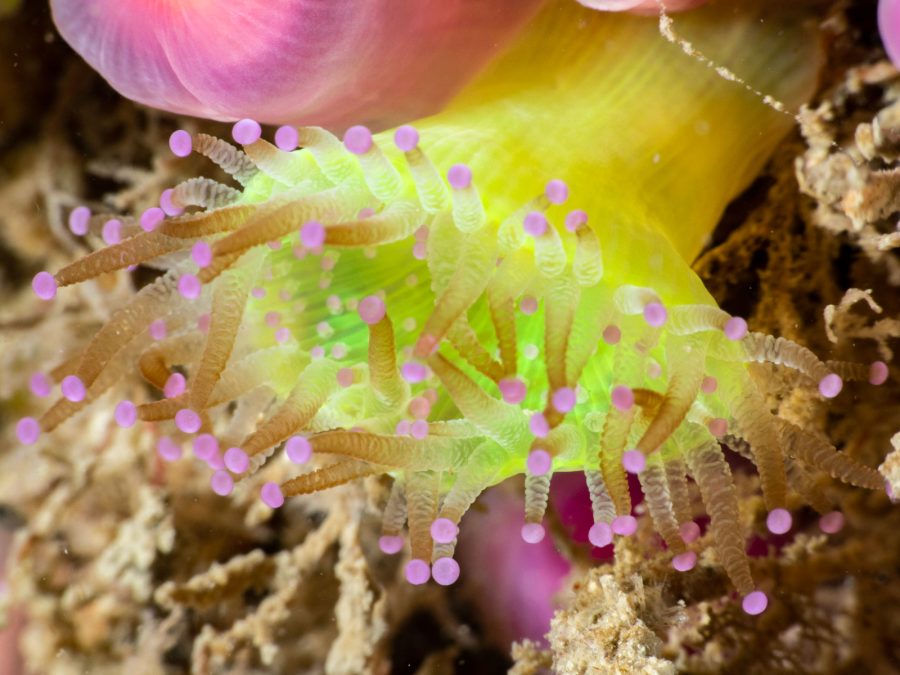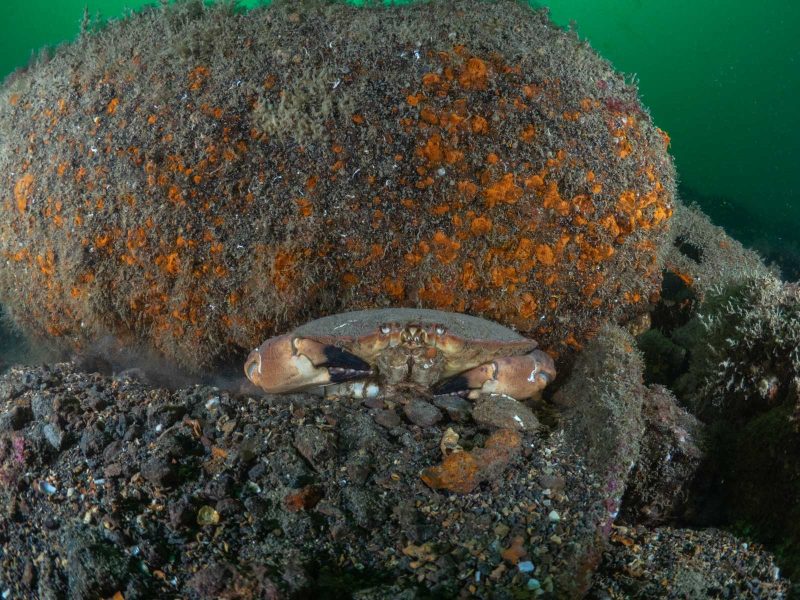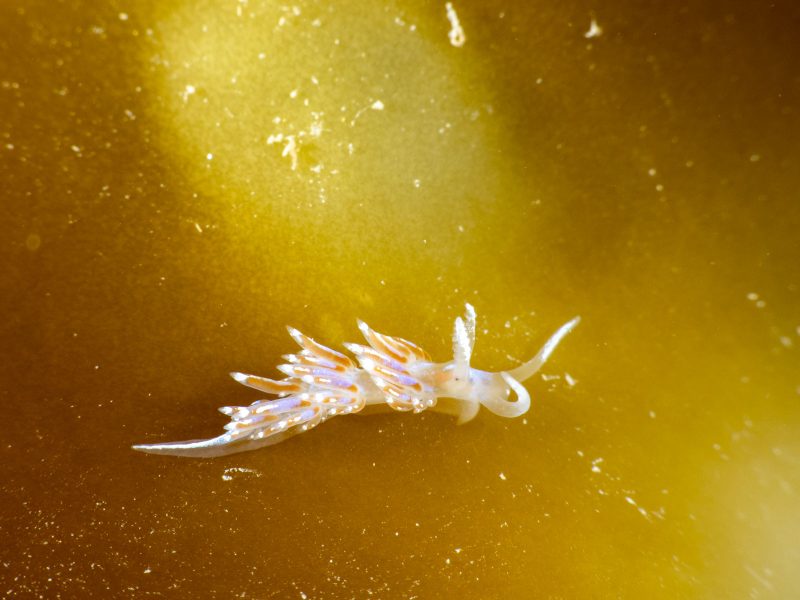6 Best Cornwall Diving Sites for Underwater Photography

As one of the UK’s premier diving locations, there are some great diving sites for underwater photography in Cornwall.
With an array of wrecks, rocky reefs and seagrass beds to explore, it boasts the most southerly and westerly points of mainland Britain, and both have some excellent dive sites.
But as underwater photographers, we aren’t always looking for great diving sites alone. In fact, our ideal dive site can be very different to a recreational dive site.
As an underwater photographer based in Cornwall, I’m going to give you an insight into what I think are some of the best dive sites around the county for getting great underwater images.

The best underwater photography locations are reliable with a range of subjects. They’re usually shallow and easily accessible, with lots of light and little to no current.
These features are important as they make the dive itself easy, and an easy dive makes for a productive photo dive.
If there are many other factors to think about like strong currents, low light, and poor visibility, it will be difficult to concentrate on your photography during the dive.
The UK isn’t always at the top of people’s dive site lists, but it’s well worth a trip! Cornish waters are particularly abundant, and support a huge variety of marine life, from blue sharks and basking sharks to tiny macro critters such as nudibranchs and pipefish.
Over the years I have seen some exciting marine life in Cornwall, including marbled torpedo rays and many one-of-a-kind sea slugs!
1. Silver Steps
Located in Falmouth, close to Pendennis point is the popular shore dive known as ‘Silver Steps.’ This site can be dived during any tide.
With little to no current, this is a great site for super macro underwater photography, as you don’t have to worry about currents moving you and your camera around!
The rocky reef has lots of cracks and crevices which are full of life. You’ll find cheeky tompot blennies and squat lobsters residing in these small spaces.
It’s a great all-round site as there is always something to find, with a range of species from small crustaceans to larger fish and cuttlefish.

This location is great for fish portraits with a wide variety of species, including corkwing wrasse, ballan wrasse, blennies, and gobies, that can be found year-round.
It also has more seasonal visitors such as catsharks, octopuses, and cuttlefish.
The subjects will of course change with the seasons, but you never come home from this site empty-handed.
The entry to this site is down a set of stairs in the seawall. The walk along the rocks is a little uneven and can be quite long if you decide to dive on a low tide, particularly a spring tide!
At high tide the water reaches the bottom of the stairs, so watch out for choppy conditions as it can make the entry and exit a little tricky. But the parking is free and just at the top of the stairs, so it provides easy access to the site.
Read more: 8 Tips to Create Beautiful Underwater Animal Portraits
2. The Manacles
Known for both its wrecks and abundance of marine life, the Manacles Reef has to be one of the best dive sites in Cornwall, providing great photo opportunities.
This site is a collection of pinnacles, ledges, steep walls, and rocky reefs rising from 40m up to 5m in places. The currents can be very strong here and the site can only be accessed by boat. Porthkerris Divers are the closest charter.

The pinnacles are almost completely covered in jewel anemones of every colour – from blues and yellows to greens, oranges, and pinks.
If you look closely, you can find skeleton shrimps and tiny amphipods living in the anemones, but you will need a close-up macro lens or a super-macro wet lens such as an SMC or CMC to photograph them!
One of the main attractions on the Manacles is the pink sea fans, along with the rare anemones and sea slugs that inhabit them.
Did you know these incredible sea fans are also a type of horny coral? They are one of the few cold-water coral species we have here in the UK.
Read more: How to Use Fisheye Lenses in Underwater Photography
3. Maerl Beds (Fal Estuary)
A spectacular shallow dive site is hidden beneath the waters of the Fal Estuary, the seabed here is covered in calcareous pink maerl. The bright colour makes for a wonderful background in your photos.
Interlaced pieces of maerl are home to many crustaceans and small fish; if you look closely into the crevices there will most likely be a pair of eyes looking back out at you.

This is a great macro and super-macro site. Most subjects are smaller than 20cm, unless you spot a catshark, ray, or skate gliding along the seabed.
Mermaids’ purses and juvenile catsharks can often be found laying on the maerl, so keep your eyes peeled.
The site is shallow at only 5-10m deep but the shallow water also means lots of ambient light. A slight current here is common especially if you miss slack water, and a gentle drift dive is the best way to explore the site as it can only be accessed by boat.
Charters are available from Cornish Diving or Atlantic Scuba.
Read more: 5 Underwater Species to Photograph in the UK
4. Hera
The Hera was a masted steel barque, which was wrecked close to Gull Rock in February 1913. This site is only accessible by boat and is best on slack tide.
A shallow wreck at 18m on high tide, the site often has clear waters and lots of light. The masts of the wreck stand 5m above the seabed which can be a great feature in the background of wide-angle photographs.

Plumose anemones and dead man’s fingers are common here, along with a variety of shoaling fish. But this wreck isn’t just for wide-angle photographers! The site also has some excellent macro photo opportunities.
The seaweed and growth on the wreckage attract many species of nudibranch, along with colourful jewel anemones and cup corals.
Charters are available from either Falmouth with Cornish Diving or Atlantic Scuba, or from Fowey with Harlyn Dive School.
5. The Helford
This is one of my personal favourite sites. It is best dived by boat, but shore dives are also an option at slack water, and Porthkerris Divers are the closest charter.
The middle of the Helford Estuary is a sandy seabed with lots of macro life in the sand; gobies, flatfish, and cuttlefish are common here.
Occasionally you may even spot catsharks and rays here breeding, and the seagrass and surrounding seaweed are often full of mermaids’ purses.

Moving closer to shore you will find seagrass beds in the shallows. The seagrass here can be up to a meter tall in the summer months and a little more sparse in the winter.
The easiest two entry points are at Durgan beach or Grebe Beach. Both have a car park a short walk away, but you can drive down to the village to unload your diving equipment before going to park.
Nudibranchs and pipefish are very common in this area, and seeing 5 to 10 individuals on the seagrass is not unusual!
It’s a great site to practice inward lighting or more creative macro lighting techniques such as snooting, as the subjects are often small and slow-moving as they rely on the seagrass for camouflage.
Read more: How to Choose a Strobe for Underwater Photography
6. Runnelstone
Further west you can find the Runnelstone, a large pinnacle rising from 40m to 10m. The area is a Marine Conservation Zone due to the diversity of life in the site and the abundance of pink sea fans.
The top of the pinnacle is mainly covered in thick kelp, giving way to rock walls covered in plumose anemones and jewel anemones.
At the base of the pinnacle is a sandy seabed with boulders over 10m in size. Conger eels and ling are common in the rocks, along with the occasional monkfish.

This site also is home to the City of Westminster wreck. The wreck itself is quite broken up but is home to plenty of critters, edible crabs, lobsters, and a variety of fish which use the wreck to shelter from the currents.
The depth of this site makes it more challenging, and although there certainly is lots of macro life, macro photography can be a challenge due to the often turbulent conditions.
For a first-time visit, I would recommend taking a wide-angle lens, particularly one that gives you the flexibility to get reefscape and close-focus wide-angle images.
In conclusion
Cornwall has some amazing diving locations.
Silver Steps is a reliable shore dive and always has something to offer, the Manacles and Runnelstone are bursting with colour, the Helford has beautiful seagrass meadows full of macro life, and the shallow banks of the Fal Estuary are home to stunning pink maerl beds.
There will be no shortage of things to shoot at any of these locations if you get your eye in and have patience.
But remember, sometimes preparing to be flexible on your dive if the desired subject doesn’t make an appearance is the best mindset to have when exploring a new dive site.
Sites with less current and calmer waters will likely be more productive. You’re not limited to a short time window around slack tide, but they may lack species that filter feed in the more turbulent water such as anemones and sea fans.
Finally, remember to set yourself up for success. Cornwall has some of the warmest waters in the UK, but it can still be chilly on long photography dives. Make sure to be prepared for the conditions. Most divers here are using dry suits or semi-dry wetsuits to stay warm.
Nobody wants to end their dive early because they are cold, especially when many subjects are waiting to be photographed!
And of course, always bring a buddy. Happy diving!





